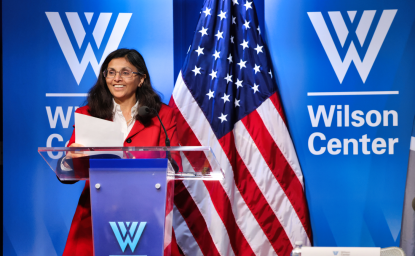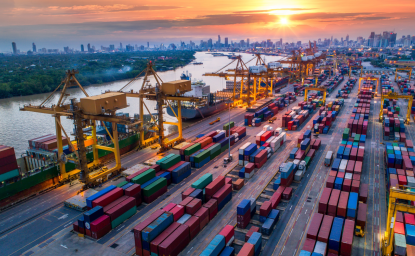When I was a young trade policy officer at Australia’s Department of Foreign Affairs and Trade, I experienced my first change of government as a civil servant. Following six years of a Labor government, a Liberal-National Coalition was elected with a mandate to shake up Australia’s economic policy. In the trade space, this meant more flexibility to negotiate free trade agreements. Following a multi-year hiatus, Australia quickly closed deals with Japan, Korea, and China. The new coalition also brought about a new term, “economic diplomacy.” It caught fire and quickly became the buzzword of the department. Not even my section’s name was immune, changing from Trade Advocacy and Statistics to Economic Diplomacy and Statistics. Economic diplomacy became a guiding principle of Australia’s engagement with the world, particularly in its own region, the Indo-Pacific. But what was it, and why did it matter?
Economic diplomacy uses a state’s economic levers (namely trade and investment) to achieve its diplomatic goals and support its domestic policy. While a new guiding principle for the Australian government in 2013, it’s been tried and tested over the ages. From the Roman Empire to Imperial China, economic diplomacy has long been a tool to help realize a state’s domestic and international objectives.
The United States is no stranger to economic diplomacy. The creation of the Bretton Woods system and the Marshall Plan were some of the greatest-ever achievements of economic diplomacy. Similarly, there are many examples where the US has attempted to use its economic might to achieve global outcomes and failed, such as using an economic embargo to force regime change in Cuba.
Infrastructure as a Diplomatic Tool
One area hotly contested in today’s world of economic diplomacy is infrastructure. From China’s Belt and Road Initiative (BRI) to the European Union’s Global Gateway to the G7’s Partnership for Global Infrastructure and Investment, infrastructure investment has become a fiercely contested domain between global powers. Why infrastructure and why now?
Infrastructure development is a key to achieving global ambitions on climate and sustainable development. Infrastructure alone is responsible for 79% of global greenhouse gas emissions, and 92% of our sustainable development goals can be achieved through infrastructure investment. However, the world has consistently been unable to meet its infrastructure needs, with the infrastructure investment gap estimated at US $3 trillion per annum and growing. It is most acute in emerging markets and developing economies.
Infrastructure investment is a key driver of economic prosperity and, if done correctly, can improve economic opportunity for the world’s most vulnerable countries and people. It also could be regenerative for nature and our planet. In a world of contested values, infrastructure is a key tool for establishing economic norms and values, including sustainability, resiliency, inclusivity, and transparency. Similarly, infrastructure such as ports and airports play an important role in both economic and military power, as China’s controversial 99-year lease on Sri Lanka’s Hambantota Port has shown. There are significant diplomatic dividends to be gained from infrastructure diplomacy, including building resilient and stable supply chains, catalyzing global climate goals, and supporting peace and security by improving the economic opportunities in partner countries.
Domestic Politics Narrow Economic Diplomacy Options Abroad
Domestically, options in economic diplomacy have narrowed for the US. There is bipartisan opposition for entering into new trade agreements. The administration cannot enter into any new free trade agreement without it first being ratified by Congress, which seems unlikely. Even watered-down agreements, such as the Indo-Pacific Economic Framework, have been unable to garner domestic support for its trade components to succeed. This ties the administration’s hands. In an environment where trade policy is off the table, investment policy has become the key driver of US economic diplomacy, and nowhere more so than in infrastructure.
The Biden administration has catalyzed global efforts to support infrastructure development. At home, the Inflation Reduction Act, Infrastructure Investment and Jobs Act, and CHIPs and Science Act have invested trillions in new infrastructure. Abroad, the administration has been driving initiatives such as the Partnership for Global Infrastructure Investment, the Just Energy Transition Partnerships (JET-Ps). It also has leveraged international agencies, such as the US Trade and Development Agency, to catalyze private capital mobilization through novel partnerships with investors. This has all been part of the administration’s explicit efforts to accelerate efforts to mitigate climate change, close the infrastructure gap in emerging markets, promote its values and standards, and support economic growth and prosperity. Implicitly, it’s an effort to provide its developing economy partners an alternative to BRI-financed projects and demonstrate that the US can be a partner of choice for new infrastructure.
Can Infrastructure Deliver?
As the world’s largest economy and home to some of its biggest pools of capital, the US is an attractive global partner for infrastructure investment. As global government balance sheets reach their capacity on investments, the private sector has increasingly been called upon to finance the infrastructure investment gap, putting the US and its private sector-driven economy in prime position to answer the call.
However, infrastructure is a long and complicated game. Despite collective efforts to date, achieving infrastructure investment at the scale required remains elusive. Infrastructure projects often take years from conception to financial close, and several more years to build and operate. Infrastructure is an illiquid asset, which requires investors who are willing to be patient with their capital to realize returns, sometimes for decades. Infrastructure is a risky business, with large and noteworthy projects subject to political risk and government intervention. And just when it appears that conditions are ripe for infrastructure investment, economic shocks such as this year’s rising interest rates have stymied investment and deal flow, according to new data from the Global Infrastructure Hub.
The Biden administration’s ability to meaningfully deliver on its economic diplomacy in infrastructure will depend on many factors outside its control, including whether the world can unlock private capital at scale. It will also depend on whether the US can stay the course in a sector that can take many years to bear fruit. It’s a risky approach, given the uncertainty of domestic politics and a 2024 presidential election that has the potential to radically transform the US' approach to its engagement with the world. Its allies and partners will be watching nervously. If its economic diplomacy in infrastructure doesn’t succeed and substantive trade deals remain off the table, the US will have a small range of economic incentives to offer its partners vis-à-vis China and others.
Yet if the US can stay the course and continue to innovate in an infrastructure sector that so desperately needs it, not only can infrastructure deliver diplomatic dividends, but we might also have a shot at achieving our challenging climate and sustainable development goals.
Author

Director of Infrastructure Policy Advancement, Bentley Systems

Wahba Institute for Strategic Competition
The Wahba Institute for Strategic Competition works to shape conversations and inspire meaningful action to strengthen technology, trade, infrastructure, and energy as part of American economic and global leadership that benefits the nation and the world. Read more

Explore More
Browse Insights & Analysis
DFC Deputy CEO Nisha Biswal Takeaways: Mobilizing Private Investment in International Infrastructure





